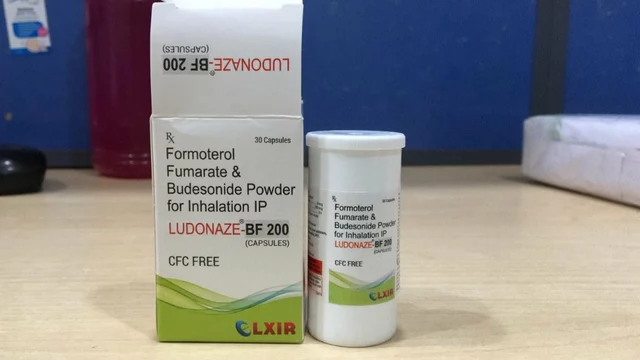Nebulizer vs Inhaler: Quick, Practical Guide to Choosing the Right Device
If you or a loved one uses breathing medicine, picking between a nebulizer and an inhaler matters. Both deliver the same types of drugs (bronchodilators, inhaled steroids), but they do it differently. This guide focuses on real-world differences so you can pick what fits your routine, needs, and age.
How each device works and who they help
Inhaler: A pressurized canister (MDI) or dry powder device gives a measured spray or powder dose. You need to time your breath with the puff, or use a spacer to make it easier. Inhalers are small, fast, and great for active people who can follow simple steps.
Nebulizer: A machine turns liquid medicine into a mist you breathe through a mask or mouthpiece over several minutes. It works without coordination, so it’s handy for young children, older adults, or people who can’t use inhalers reliably.
Pros and cons — quick bullets to decide
Inhaler pros: portable, fast relief (seconds), lower cost per dose, no power needed, ideal for emergencies when you’re trained to use one. Inhaler cons: needs proper technique, may require a spacer for kids or poor coordination.
Nebulizer pros: simple to use (just breathe normally), good for severe attacks or long treatments, easier for very young or frail patients. Nebulizer cons: bulkier, needs electricity or battery, treatments take 5–15 minutes, and cleaning is essential to avoid infection.
Both devices deliver similar medicines, but doses aren’t always identical. Doctors may prescribe different amounts depending on the device. Never switch devices or change doses without medical advice.
Practical tips to get the most from each device:
- Using an inhaler: Shake the can, breathe out, seal lips around the mouthpiece, press and inhale slowly, then hold your breath 5–10 seconds. Use a spacer if you struggle with timing.
- Using a nebulizer: Sit upright, use the mouthpiece when possible, breathe normally until the mist stops (usually 5–15 minutes). Keep the machine on a flat surface to avoid spills.
- Cleaning: Rinse inhaler spacer and nebulizer parts after each use and follow the maker’s cleaning schedule. Dirty parts raise infection risk and lower drug delivery.
When to prefer one over the other: pick an inhaler if you want portability and quick relief and you can use it properly. Choose a nebulizer if coordination is a problem, during severe breathing episodes when using an inhaler is hard, or when longer treatments are needed.
Last practical note: talk to your clinician about device training, spacer options, and medication equivalence. If you’re using rescue meds more than twice a week, that’s a signal to review your treatment plan and possibly change devices or medicines.
Want help with technique or which device fits your lifestyle? Ask your pharmacist or doctor for a quick demo — it’s the fastest way to get relief that actually works.

Asthma management isn't just about albuterol anymore. This article breaks down the real-life efficiency, convenience, and user experiences of inhalers from nebulizers to dry powders. You'll get actionable tips, surprising data, and practical facts on how new devices and alternatives can change your asthma game. Navigate the world of modern inhalers for smarter, easier asthma care.
Continue Reading





